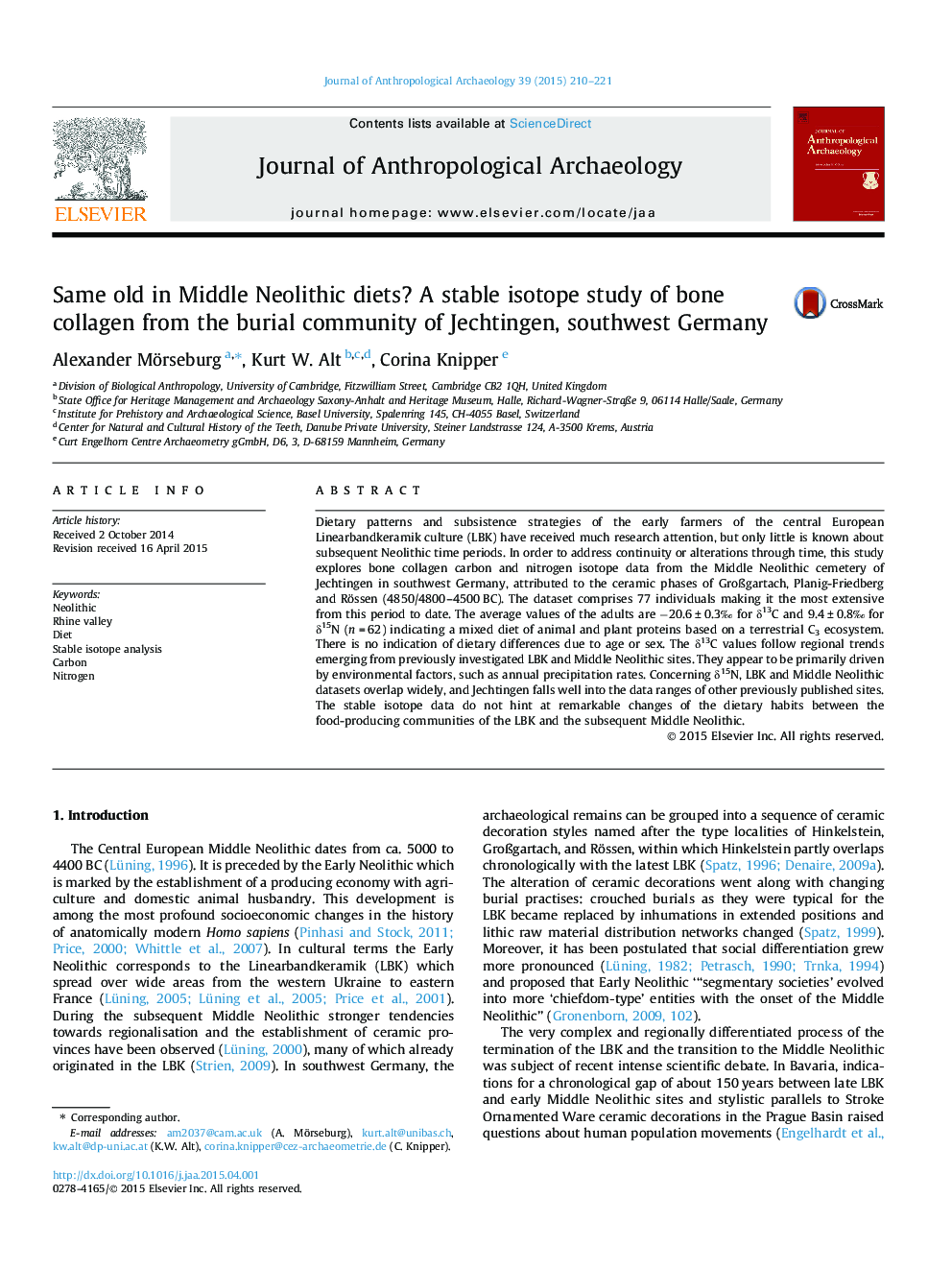| Article ID | Journal | Published Year | Pages | File Type |
|---|---|---|---|---|
| 7440588 | Journal of Anthropological Archaeology | 2015 | 12 Pages |
Abstract
Dietary patterns and subsistence strategies of the early farmers of the central European Linearbandkeramik culture (LBK) have received much research attention, but only little is known about subsequent Neolithic time periods. In order to address continuity or alterations through time, this study explores bone collagen carbon and nitrogen isotope data from the Middle Neolithic cemetery of Jechtingen in southwest Germany, attributed to the ceramic phases of GroÃgartach, Planig-Friedberg and Rössen (4850/4800-4500 BC). The dataset comprises 77 individuals making it the most extensive from this period to date. The average values of the adults are â20.6 ± 0.3â° for δ13C and 9.4 ± 0.8â° for δ15N (n = 62) indicating a mixed diet of animal and plant proteins based on a terrestrial C3 ecosystem. There is no indication of dietary differences due to age or sex. The δ13C values follow regional trends emerging from previously investigated LBK and Middle Neolithic sites. They appear to be primarily driven by environmental factors, such as annual precipitation rates. Concerning δ15N, LBK and Middle Neolithic datasets overlap widely, and Jechtingen falls well into the data ranges of other previously published sites. The stable isotope data do not hint at remarkable changes of the dietary habits between the food-producing communities of the LBK and the subsequent Middle Neolithic.
Related Topics
Social Sciences and Humanities
Arts and Humanities
History
Authors
Alexander Mörseburg, Kurt W. Alt, Corina Knipper,
